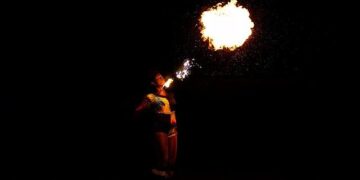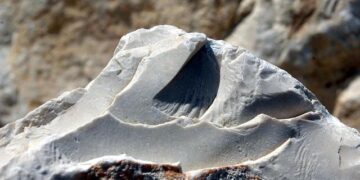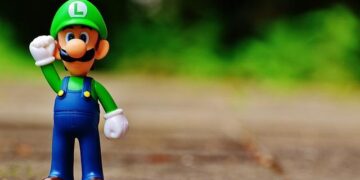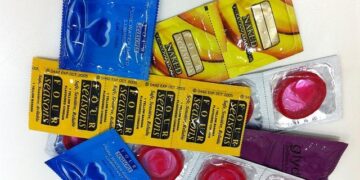Infected wounds pose a major mortality risk in animals. Injuries are common in Matabele ants (Megaponera analis), which raid pugnacious prey. New research shows that these predatory ants can determine when wounds are infected and treat them accordingly. By applying a variety of antimicrobial compounds and proteins secreted from the metapleural gland to infected wounds, workers reduce the mortality of infected individuals by 90%.

A Matabele ant (Megaponera analis) tends to the wound of a fellow ant whose legs were bitten off in a fight with termites. Image credit: Erik Frank / Universität Würzburg.
Infections are a major mortality risk in animals with the risk of transmission of contagious pathogens being particularly life-threatening in group living animals.
This has led to a suite of pathogen-induced changes in social interactions, like social distancing, sickness cues, and medical care.
In injured individuals, the major barrier against infections — the cuticle or epidermis — is damaged and therefore provides an easy entry point for life-threatening infections.
Recently, several mammals have been shown to lick wounds to apply antiseptic saliva. However, the efficacy of these behaviors remains largely unknown and occurs irrespective of the state of the wound.
In social insects, interactions to combat pathogens range from preventive measures like nest disinfection or allogrooming to moribund individuals leaving the nest to die in isolation or the destructive disinfection of their infected brood.
But if and how social insect colonies care for injured individuals that were exposed to pathogens remains poorly understood.
Workers of predatory Matabele ants have been shown to care for the injuries of nestmates, which are common because this ant feeds exclusively on pugnacious termite species. As many as 22% of the foragers engaging in raids attacking termites have one or two missing legs.
Injured workers are carried back to the nest where other workers treat their wounds, by licking and grooming the wound during the first three hours after injury.
When the wounds of injured workers are not treated by nestmates, 90% of the injured workers die within 24 hours after injury, but the mechanisms behind these treatments are unknown.
“The aim of our study was to identify the cause of death in injured individuals and the potential mechanisms involved in the detection and treatment of injuries,” said lead author Dr. Erik Frank, a researcher at the University of Lausanne and the University of Würzburg, and his colleagues.
They found that the Gram-negative bacterium Pseudomonas aeruginosa caused lethal infections in injured workers of Matabele ants.
They showed that wound infections were associated with specific changes in the cuticular hydrocarbon profile, allowing nestmates to diagnose the infection state of injured individuals and apply the appropriate antimicrobial treatment.
They also identified 112 chemical compounds and 41 proteins in the secretion from the ants’ metapleural gland, half of which had antimicrobial or wound healing properties.
“Chemical analyses have shown that the hydrocarbon profile of the ant cuticle changes as a result of a wound infection,” Dr. Frank said.
“It is precisely this change that the ants are able to recognize and thus diagnose the infection status of injured nestmates.”
“For treatment, they then apply antimicrobial compounds and proteins to the infected wounds. They take these antibiotics from the metapleural gland, which is located on the side of their thorax.”
“Its secretion contains 112 components, half of which have an antimicrobial or wound-healing effect.”
“And the therapy is highly effective: the mortality rate of infected individuals is reduced by 90%.”
“With the exception of humans, I know of no other living creature that can carry out such sophisticated medical wound treatments.”
“These findings have medical implications because the primary pathogen in ant’s wounds, Pseudomonas aeruginosa, is also a leading cause of infection in humans, with several strains being resistant to antibiotics,” said University of Lausanne’s Dr. Laurent Keller, senior author of the study.
The results appear in the journal Nature Communications.
_____
E.T. Frank et al. 2023. Targeted treatment of injured nestmates with antimicrobial compounds in an ant society. Nat Commun 14, 8446; doi: 10.1038/s41467-023-43885-w
>>> Read full article>>>
Copyright for syndicated content belongs to the linked Source : Breaking Science News – https://www.sci.news/biology/matabele-ants-antimicrobial-compounds-infected-wounds-12578.html































